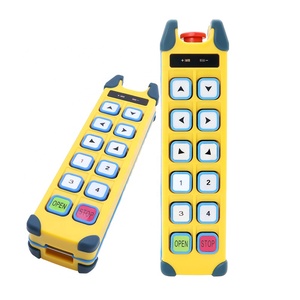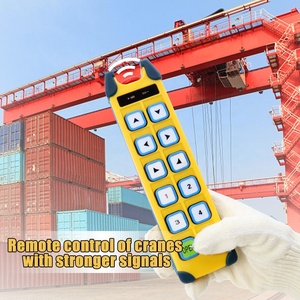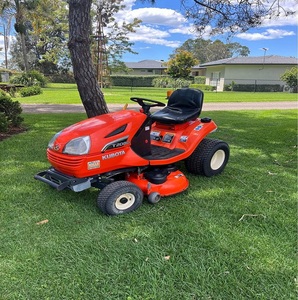Types of remote controls
Remotes have become integral to modern consumer electronics, offering the convenience of controlling devices from a distance. Commonly associated with televisions, remote controls now span a wide array of applications beyond their traditional domain. From computer peripherals to automotive keyless entry systems, the versatility of remote controls knows no bounds. Within the diverse landscape of remote controls, a spectrum of types caters to distinct needs and functionalities.
- RF remote control: Remote controls that use radio frequency or RF to control devices operate by emitting radio waves that convey commands to corresponding receivers situated within the devices they govern. These remotes offer the advantage of functioning independently of line-of-sight requirements since radio signals can traverse solid surfaces and distances of up to 100 feet. Consequently, RF remotes find extensive utilization in contexts requiring extensive range and penetration capabilities, such as industrial settings and automobile keyless entry systems.
- Infrared remote control: Infrared remote controls rely on infrared light beams to transmit commands to their intended devices. These remotes find widespread application in consumer electronics, such as televisions, DVD players, and air conditioners. Nonetheless, infrared remotes necessitate a clear line of sight between the remote control and the device's infrared receiver, given that infrared light cannot penetrate solid objects.
- Bluetooth remote control: A Bluetooth remote control is a type of remote control device that operates over short distances using Bluetooth wireless technology. Similar to mobile phones and laptops, these remotes function by pairing with Bluetooth-enabled devices, offering a range of approximately 30 feet. Bluetooth remotes have gained popularity for their application in controlling media playback on smartphones, tablets, and Bluetooth speakers.
- Voice-controlled remote: Voice-controlled remotes have revolutionized the traditional concept of remote controls by integrating voice recognition technology into their design. These innovative remotes empower users to command and govern various devices by simply articulating their preferences, rendering the process seamless and efficient. Noteworthy examples of voice-controlled remote wonders include the Amazon Alexa Voice Remote, Google's Nest Hub Max with Voice Remote, and Apple's Siri Remote, each contributing to a transformative shift in user experience.
Function and feature of remote
Function of remotes
It is a time-consuming and inefficient chore to move between rooms to modify settings or control electronic devices. The remote control enables users to do various activities without physically touching the appliance, which has become a necessary tool for modern consumer electronics.
Feature of remotes
- Wireless transmission: This means that, through infrared or radiofrequency signals, remote controls may operate electronic devices from a distance. The adaptability and usefulness of remote controls are made possible by wireless transmission.
- Gesture control: Some remote controls feature a gesture control option, which enables users to manage devices simply by moving the remote.
- Voice control: Users may control gadgets with commands delivered through a microphone on the remote controller owing to a voice control capabilities.
- Customizable buttons: The purpose and characteristics of buy remotes might change based on the application. The buttons on a remote control are frequently customizable, which enables users to program certain buttons according to their needs.
- Touchscreen interface: A touchscreen interface is one of the features and functions of remote controls. With a responsive touchscreen, users can simply choose and navigate various functions and settings.
- Backlit buttons: Backlit buttons are a helpful function of remotes since they enable users to use the remote in dimly lit conditions. These buttons have lighting incorporated into them.
- Long battery life: The endurance of a remote control is another vital factor. It is required of it to endure and work with little maintenance for a long time.
Scenarios
- Home Entertainment: One of the most typical applications of remote control gadgets is in home entertainment systems, where they may be used to control TVs, DVD players, cable boxes, and streaming devices. Here, remote control devices might be found in the form of compact infrared remotes or more sophisticated radio-frequency or Bluetooth remotes that allow users to navigate channels, adjust settings, and play or pause content from a distance.
- Computer and Gaming: Remote controls are widely used in computer and gaming applications to provide intuitive and ergonomic input devices for various activities. Remote control for PCs typically take the shape of wireless keypads or air mice that allow users to enter text, control multimedia players, and navigate websites from the comfort of their sofa or chair.
- Smart Home: DIY remote control systems might be used in smart home applications to monitor and control various household items such as lights, thermostats, security cameras, and appliances. These systems can include smartphone apps that serve as a remote control over Wi-Fi or Bluetooth connections, as well as dedicated remote control units that allow users to customize their smart home experience and automate tasks.
- Industrial and DIY Applications: In addition to typical applications, remote controls might also be used in industrial and DIY settings for tasks such as machinery operation, drone control, and automation of regular chores. Depending on the application's complexity and requirements, the remote control devices may vary greatly in design and functionality from simple handheld transmitters to sophisticated touchscreen controllers with telemetry feedback and programming capabilities.
How to choose a simple remote control
There are 8 million remote controls for TVs, one manufacturer claims. Some may be more user-friendly than others. Nonetheless, every possible control should be examined before purchasing in bulk.
- Usability testing: Finding the right remote is about more than clicking buttons. The layout, iconography, and readability of the manual are essential to the remote's overall ease of use. Try out a few yourself before choosing any.
- Evaluate system demands: Consider how easy the remote control will interoperate with the system. Interoperability is more than just integrating into the existing system; it is about demand. For example, touchscreen remotes may require more technical support than dedicated remotes.
- Understand and stick to the budget: Manufacturers have simple remotes at every price point. However, more expensive remotes may have features that are not required for a particular system. Dedicated remotes are often more affordable, but they may not handle advanced multi-media experiences.
- Explore educational resources: Look for educational resources and support from remote control manufacturers. They can help integrators understand controls and make the best choice for users' needs.
- Consider how the remote control will be used: Some simple remote controls better suit the demands of the environment. For example, rooms with a high degree of use and the potential for remote control loss may call for a more robust dedicated control.
- What sources and primary functions does the user want to control?Different remotes offer a range of functions controls to maximize user experience. Dedicated remotes are often more programmable and have extra buttons for specific content sources.
- How many devices will be controlled by the remote?Simple remotes vary depending on the number of devices they can control. A basic design can control only a single device, while an advanced model can handle three or more devices.
- Does the remote have line-of-sight capability?Line of sight controls are necessary to change channels, control volume or switch power on and off. Access to the device's Bluetooth range is not critical for basic operations on integrated devices like streaming services.
- Consider the learning curve: If a universal remote is to be used, it is vital to know that users may need to learn a different button layout. Training and educational resources are necessary for user compliance.
Remote FAQ
Q1: How long does the battery last in a remote control?
A1: The battery life of a remote control depends on its usage and the type of battery used. For example, alkaline batteries can last up to a year with regular use. However, rechargeable batteries are a more sustainable option as they can be recharged many times.
Q2: Is it possible to replace the batteries in a remote control?
A2: Yes, most remote controls have a battery compartment that allows easy replacement of batteries when they run out.
Q3: How to dispose of old batteries from a remote control?
A3: Used batteries should be disposed of properly, as they can harm the environment if not thrown away correctly. Many communities have battery recycling programs where old batteries can be taken for recycling. Check with local waste management authorities for disposal guidelines in the area.
Q4: Can a remote control be recycled?
A4: Yes, remote controls can be recycled. However, they must be taken to a e-cycling facility as most curbside recycling programs do not accept them. Remote controls have several electronic components that can be recycled, such as the circuit board, metal parts, and plastic casing.


















































































































































































